
CBSE Class 9 Science Notes Chapter 5: Chapter 5 of CBSE Class 9 Science, "The Fundamental Unit of Life," focuses on cells, which are the basic building blocks of all living things. This chapter covers how cells were discovered and explains the cell theory, which states that all living things are made of cells.
It describes the differences between simple cells (prokaryotic) and complex cells (eukaryotic). The chapter also explains the structure and function of different parts of the cell, like the nucleus, mitochondria, endoplasmic reticulum, Golgi apparatus, and lysosomes. Understanding these basics helps students learn how life functions at the smallest level and prepares them for more advanced biology topics.CBSE Class 9 Science Notes Chapter 5 The Fundamental Unit of Life Overview
These notes for CBSE Class 9 Science Chapter 5, "The Fundamental Unit of Life," are prepared by subject experts at Physics Wallah. They provide a clear and comprehensive understanding of cells, which are the basic units of life. These expert-prepared notes are designed to help students grasp the important concepts of cell biology effectively.CBSE Class 9 Science Notes Chapter 5 PDF
The PDF link provided below for CBSE Class 9 Science Notes Chapter 5 provide students a convenient resource for studying this important topic. This detailed notes covers important concepts such as the states of matter, physical properties, and changes of state in a clear and concise manner.CBSE Class 9 Science Notes Chapter 5 PDF
CBSE Class 9 Science Notes Chapter 5 The Fundamental Unit of Life
Cells
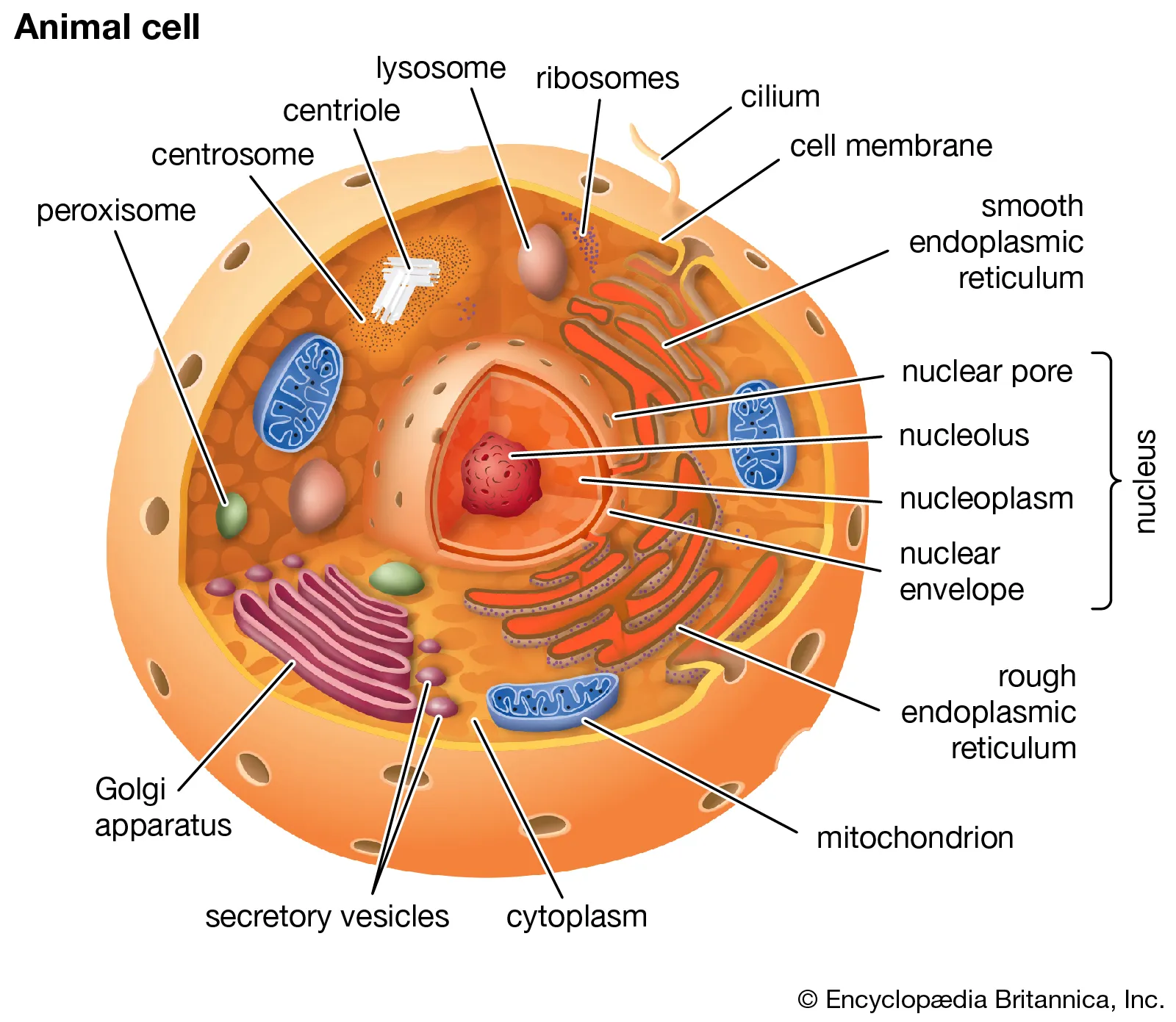 Cells are the basic building blocks of all living organisms. Every living thing, from the smallest bacteria to the largest animals and plants, is made up of cells. Here are some key points about cells:
Cells are the basic building blocks of all living organisms. Every living thing, from the smallest bacteria to the largest animals and plants, is made up of cells. Here are some key points about cells:
Discovery of Cells
Cells were first discovered by Robert Hooke in 1665 when he observed a slice of cork under a microscope. He noticed that the cork was made up of tiny, box-like structures which he called "cells."Cell Theory
The cell theory is a fundamental concept in biology and includes the following points:- All living organisms are composed of one or more cells.
- The cell is the basic unit of structure and function in living organisms.
- All cells arise from pre-existing cells.
Cellular Respiration
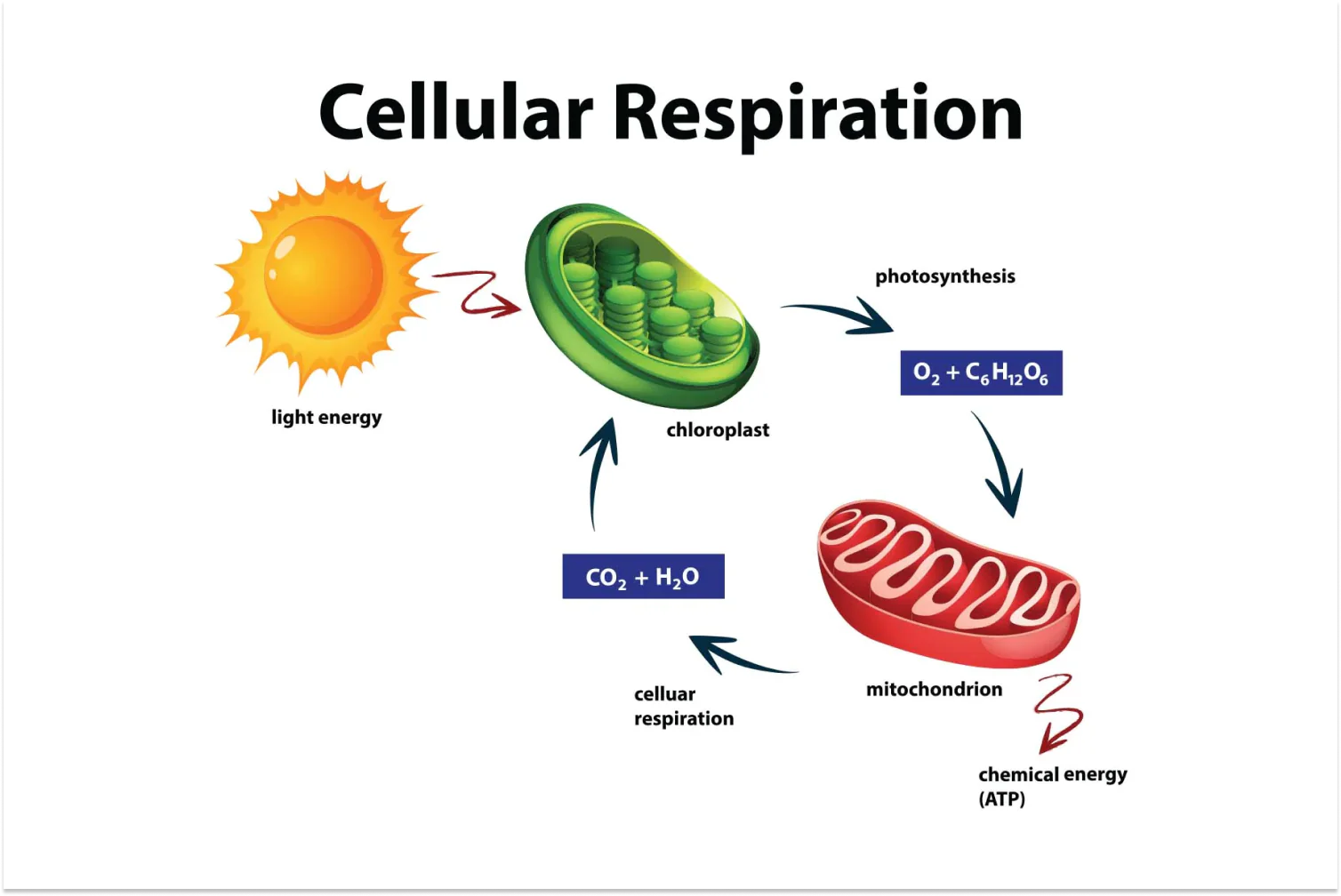
Glucose Absorption : Cells absorb glucose, a type of sugar, from the food we eat. Glucose is the primary fuel for cellular respiration.
Breaking Down Glucose : Inside the mitochondria, glucose is broken down in a series of chemical reactions. This process requires oxygen and produces carbon dioxide and water as by-products.
Energy Production : The main purpose of breaking down glucose is to produce energy. The energy released from glucose is used to form adenosine triphosphate (ATP), which is the energy currency of the cell. ATP provides the energy needed for various cellular activities and functions.
Structural Organization of Cells
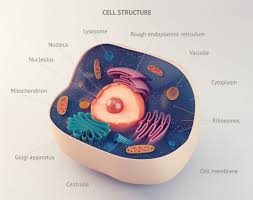
Prokaryotic & Eukaryotic Cells
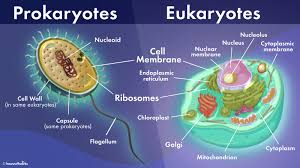 Cells are broadly classified into two types: Prokaryotic and Eukaryotic cells.
Cells are broadly classified into two types: Prokaryotic and Eukaryotic cells.
- Prokaryotic Cells : These cells are primitive and simple. They lack a well-defined nucleus. Their genetic material is not enclosed within a nuclear membrane. Examples of prokaryotic cells include bacteria and archaea.
- Eukaryotic Cells : These cells are more advanced and complex. They have a well-defined nucleus where the genetic material is enclosed within a nuclear membrane. Eukaryotic cells also contain various membrane-bound organelles, such as mitochondria, endoplasmic reticulum, and Golgi apparatus. Examples include plant and animal cells.
Cell Structure in Eukaryotic Cells
Eukaryotic cells have a detailed and organized structure that includes the following components:- Cell Membrane : The outer boundary of the cell that controls the movement of substances in and out of the cell.
- Nucleus : The control center of the cell, containing DNA and responsible for regulating various cellular activities. It is surrounded by a nuclear membrane.
- Cytoplasm : The jelly-like substance within the cell membrane that contains all the organelles.
-
Membrane-bound Organelles
:
- Mitochondria : The powerhouse of the cell, responsible for cellular respiration and energy production.
- Endoplasmic Reticulum (ER) : A network of membranes involved in protein and lipid synthesis. It can be rough (with ribosomes) or smooth (without ribosomes).
- Golgi Apparatus : Modifies, sorts, and packages proteins and lipids for storage or transport out of the cell.
- Lysosomes : Contain digestive enzymes to break down waste materials and cellular debris.
- Chloroplasts : (in plant cells) Contain chlorophyll and are responsible for photosynthesis.
Cell Membrane
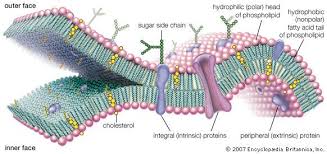 The cell membrane is the outer covering of a cell. It serves as a protective barrier, controlling the movement of substances in and out of the cell. Here are some key points about the cell membrane:
The cell membrane is the outer covering of a cell. It serves as a protective barrier, controlling the movement of substances in and out of the cell. Here are some key points about the cell membrane:
- Composition : It is primarily made up of a phospholipid bilayer, which provides flexibility and strength.
- Selectively Permeable : This means it allows certain molecules to pass through while blocking others.
- Fluid Mosaic Model : This model describes the cell membrane as a dynamic and flexible structure with various proteins embedded in or attached to the bilayer, resembling a mosaic.
Diffusion
Diffusion is the movement of molecules from an area of high concentration to an area of lower concentration. It is a passive process, meaning it does not require energy. Examples include:- Gas Exchange : Carbon dioxide and oxygen move across the cell membrane by diffusion.
Active and Passive Transport
- Passive Transport : This involves the movement of substances across the cell membrane without the use of energy. Examples include diffusion and facilitated diffusion.
- Active Transport : This requires energy (usually in the form of ATP) to move substances against their concentration gradient, from a region of low concentration to a region of high concentration.
Osmosis in Selectively Permeable Membrane
Osmosis is a special type of diffusion that involves the movement of water molecules across a selectively permeable membrane. Key points include:- Selective Permeability : The membrane allows water molecules to pass through but restricts many other molecules.
- Water Movement : Water moves from an area of low solute concentration (high water concentration) to an area of high solute concentration (low water concentration).
- Importance : Osmosis is crucial for maintaining cell turgor and regulating the internal environment of cells.
Isotonic, Hypotonic, and Hypertonic Solutions
- Isotonic Solutions : These have the same solute and pH concentration as the surrounding body fluid or the cytoplasm of the cell. In isotonic solutions, water moves in and out of the cell at an equal rate, so there is no net change in cell volume.
- Hypotonic Solutions : These contain a lower solute concentration compared to the surrounding fluid. In a hypotonic solution, water enters the cell, causing it to swell and possibly burst due to the excess intake of water.
- Hypertonic Solutions : These have a higher solute concentration compared to the surrounding fluid. In a hypertonic solution, water leaves the cell, causing it to shrink as it loses water.
Cell Walls in Plants
 Plant cells differ from animal cells because they have a cell wall made of cellulose. The cell wall provides the following functions:
Plant cells differ from animal cells because they have a cell wall made of cellulose. The cell wall provides the following functions:
- Structural Support : It gives rigidity and strength to the plant cell, helping maintain its shape.
- Protection : It protects the cell from mechanical stress and physical damage.
- Withstanding Changes : The cell wall allows plant cells to withstand greater changes in their environment without bursting, especially in hypotonic solutions.
Cell Organelles
Eukaryotic cells contain various membrane-bound organelles that perform specific functions:- Nucleus : Controls cell activities and contains genetic material.
- Endoplasmic Reticulum (ER) : Synthesizes proteins and lipids.
- Golgi Apparatus : Modifies, sorts, and packages proteins and lipids.
- Lysosomes : Contain enzymes to digest cellular waste.
- Mitochondria : Produce energy through cellular respiration.
Endocytosis
Endocytosis is a process by which the cell membrane folds inward to bring substances into the cell, forming a vesicle. This is particularly observed in single-celled organisms like Amoeba.Nucleus in Cells
The nucleus is the control center of the cell, containing genetic material (DNA) and regulating cell functions such as growth, metabolism, and reproduction:- Nuclear Membrane : Double-layered and contains pores for material exchange.
- Chromosomes : Contain DNA and proteins; visible as condensed structures during cell division.
- Chromatin : The less condensed form of chromosomes during the growth phase of the cell.
Chromosomes
Chromosomes are structures within the nucleus made of DNA and associated proteins:- DNA : Carries genetic information for inheritance.
- Chromatin : The thread-like form of chromosomes during the non-dividing phase.
- Human Chromosomes : Humans have 23 pairs of chromosomes (46 in total).
Cytoplasm
The cytoplasm is the gel-like fluid inside the cell, providing a medium for chemical reactions and housing cell organelles. It helps maintain cell structure and facilitates the movement of materials within the cell.Organelles
Organelles are specialized structures within the cytoplasm of a cell that perform distinct functions essential for the cell's survival and proper functioning.Endoplasmic Reticulum
The endoplasmic reticulum (ER) is a network of membranous tubules within the cytoplasm of a eukaryotic cell, playing a critical role in the synthesis, folding, modification, and transport of proteins and lipids.- Rough ER : Studded with ribosomes, the rough ER is involved in protein synthesis and modification. The ribosomes on the rough ER are the sites where amino acids are assembled into proteins.
- Smooth ER : Lacking ribosomes, the smooth ER is involved in lipid metabolism and the detoxification of harmful substances. It also plays a role in carbohydrate metabolism and the storage of calcium ions.
Golgi Apparatus
The Golgi apparatus, often referred to as the cell's "post office," is responsible for packaging proteins and lipids into vesicles for delivery to targeted destinations within or outside the cell. It modifies products from the ER, adding carbohydrates or phosphates, and sorts them for transport.Lysosomes
Lysosomes are membrane-bound organelles containing digestive enzymes. These enzymes can break down macromolecules, old cell parts, and foreign invaders like bacteria. Because they can digest the cell's own components, they are sometimes called "suicide bags."Mitochondria
Mitochondria, known as the powerhouse of the cell, generate energy in the form of ATP through cellular respiration. They have their own DNA (mtDNA) and ribosomes, allowing them to produce some of their own proteins independently of the cell's nuclear DNA, making them semi-autonomous.Plastids
Plastids are organelles found in the cells of plants and algae. They are involved in the synthesis and storage of food.- Chloroplasts : Contain chlorophyll and are the sites of photosynthesis.
- Leucoplasts : Involved in the storage of starch, oils, and proteins.
- Chromoplasts : Contain pigments that give flowers and fruits their color.
Vacuoles
Vacuoles are large, membrane-bound vesicles present in plant cells that store water, nutrients, and waste products. They help maintain the structural integrity of the plant cell by providing turgor pressure. In animal cells, vacuoles are either very small or absent.Comparison between Plant and Animal Cells
Plant Cells :
- Have a cell wall made of cellulose.
- Contain chloroplasts for photosynthesis.
- Have large central vacuoles for storage and maintaining cell rigidity.
- Nucleus is often located at the periphery due to the large central vacuole.
Animal Cells :
- Lack a cell wall.
- Do not have chloroplasts.
- Have smaller vacuoles, if any.
- Nucleus is centrally located.
Benefits of CBSE Class 9 Science Notes Chapter 5 The Fundamental Unit of Life
- Simplified Learning : These notes break down complex concepts into simple, understandable points, making it easier for students to grasp the fundamental aspects of cell biology.
- Expert Preparation : Prepared by subject experts, these notes ensure accuracy and relevance, covering all essential topics in detail while adhering to the CBSE curriculum.
- Comprehensive Coverage : The notes cover all key topics of the chapter, including the structure and functions of different cell organelles, types of cells, and various cellular processes, providing a thorough understanding of the subject.
- Clear Diagrams : Visual aids and diagrams included in the notes help in better visualization and retention of the cell structure and functions, aiding in better comprehension.
- Exam-oriented : The notes are designed with a focus on important topics frequently asked in exams, helping students to prepare effectively for their tests.
- Time-saving : Summarized content saves time for students, allowing them to revise quickly and efficiently before exams.
- Foundation for Higher Studies : A solid understanding of the fundamental unit of life forms a strong foundation for more advanced topics in biology, essential for higher studies in science.
CBSE Class 9 Science Notes Chapter 5 FAQs
What is a cell?
What are the two main types of cells?
What is the function of the nucleus?
What are mitochondria and what is their function?
What are the roles of different organelles in the cell?










